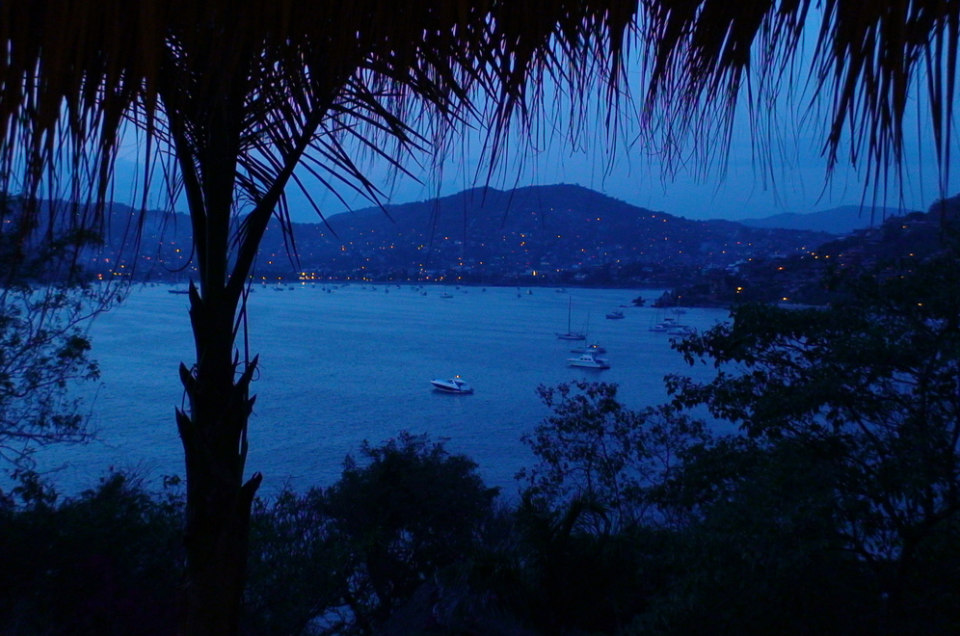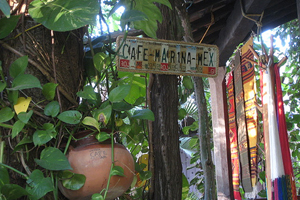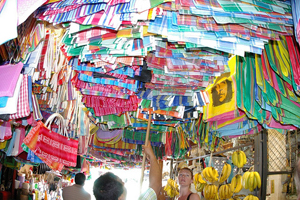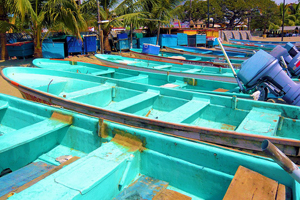There’s a scene in the 1994 film “The Shawshank Redemption” where the Tim Robbins character waxes poetic about getting out of jail and going to a little place right on the Pacific, a warm place with no memory. “Tell you where I’d go,” he says, “Zihuatanejo.” He dreams of opening a little hotel right on the beach, buying an old boat and fixing it up to take his guests out charter fishing.
As a member of the hotel staff leads my husband and I through meandering pathways bordered by perfectly manicured tropical gardens and swishing coconut palms to my adobe-inspired casita, it occurs to me that the 70-room Viceroy Zihuatanejo Hotel—with its beach butler service, cooking classes, three swimming pools and $10 margaritas—is probably not quite what the convict in the movie had in mind. But it suits us just fine.
Zihuatanejo, I’m told, means “the place of women.”
Legend has it that centuries before the European conquistadores arrived on Mexican shores, a Tarascan leader named Caltzonzin built a rock wall in the harbor to protect his people’s women so they could swim safely in the sea. The wall still stands today. But more surprising than that is the fact that Zihua, as locals call it, has not turned into another Cancun or Cabo. Instead of frat boys doing body shots and tourists sporting tacky t-shirts, the laid back town offers a taste of real Mexico with plenty of regional cuisine served at small beachfront restaurants, quiet beaches perfect for mastering the art of doing nothing and a picturesque fishing village that hasn’t changed much in the last few decades.
The heart of Zihua is El Centro, with its narrow streets and tiled alleys lined with eclectic shops and colorful cafes. The daily market, Mercado Municipal,features everything from fresh fruit and spices to handmade silver jewelry and traditional masks. I spot a woman buying vegetables and wearing a beautiful white dress. In the sweltering heat, she looks fresh and cool. “Que lindo vestido,” I tell her admiringly. She smiles shyly and tells me it is a traditional dress from Oaxaca. “You can get one like it at Lupitas,” she says directing me to a cute little shop that stocks traditional embroidered cotton skirts, dresses, shawls, scarves and purses from different Mexican regions including Guerrero, Chiapas, Oaxaca and Guadalajara.
Since I’ve got a proper Mexican dress I figure I need something to complement the look. There are countless jewelry stores in town but everyone I ask tells me to go to Alberto’s, a family-owned boutique that has been handcrafting silver jewelry since the 1930s. At the shop I spot a photo of Paul McCartney posing with whom I take to be Alberto himself. The saleswoman tells me the ex-Beatle designed a piece, with Alberto’s help, for his wife Linda during a visit in 1977. I watch the silversmith work on a particularly beautiful ring design and—one hour later—I walk out with my purchases: two rings, a necklace and a pair of earrings with inset coral stones.
Just down the street from Alberto’s is Casa Tequila, where visitors can taste from over 200 brands, including an impressive selection of top shelf tequilas like El Cofradia and Don Camilo. After a tasting, my husband purchases a 100% agave anejo that’s been aged for three years in white oak barrels and is bottled in a beautiful hand-painted decanter. Feeling a little tipsy, we head out to find a restaurant that has been highly recommended for serving the best local dish, pozole. You can find red, white and green pozole, though in this part of Mexico it is most typically the latter. And Tamales y Atole Any, we’re told,is the restaurant to try it. The dish, a kind of hearty stew that blends grains, crunchy bits of pork, Serrano chiles, green mole and tomatillos and is served in a cazuela or bowl, doesn’t disappoint. Another local specialty is tiritas, raw whitefish marinated in green chiles and vinegar. “For that you should go to La Sirena Gorda,” the waiter tells us. While in any other town you’d expect to hear that the establishment you’re at serves the very best (regardless of whether it’s true or not), here in Zihuatanejo the locals are infused with a kind of honesty that is at once charming and most unexpected. Everywhere we go, locals ask us how we like Zihua and point us to their favorite places. “Have you been to La Zapotteca?” the waiter asks. “They have very nice hammocks to take home. True Mexican gifts!”
The store, which is housed in one of the few remaining century-old plantation buildings that miraculously survived a devastating hurricane in the 1920s, is located in Paseo del Pescador, or Fisherman’s Walk, a pedestrian-only walkway along the beach between the Regional Museum and the fishing pier. Inside La Zapotteca we find handmade rugs, woven baskets and vibrant colored hammocks. Next door is El Jumil, another boutique showcasing folk art and paper-mache objects. Exhausted from shopping, eating and drinking, we find ourselves a patch of sand on the beach under an umbrella and take a much-deserved siesta.
That night for dinner we go to Villa de la Selva, a contemporary Mediterranean restaurant perched atop a rocky cliff and surrounded by a lush tropical forest in Ixtapa, just 15 minutes from Zihua. At the restaurant, dishes like salmon in platano leaves with couscous and salsa poblana compete for attention with the 180-degree views of the bay and the beaches in the distance. As the sun sets we spot coatimundi, a bizarre animal that looks like a cross between a raccoon and a monkey and likes to forage and nest in the nearby trees.
Our last day in Zihua we kick back at the hotel and let the staff pamper us. Whenever we’re feeling a bit parched or hungry, all we need do is raise the flag attached to the trunk of our palapa and immediately a smiling faced waiter dressed in white rushes to us with a drink, chips and guac, an extra towel or sunscreen.
“The Shawshank Redemption” ends with Tim Robbins sitting on a beach, looking tanned and relaxed—much like my husband and me. If he were smart, though, his little hotel would offer beach butlers like the ones at the Viceroy.



